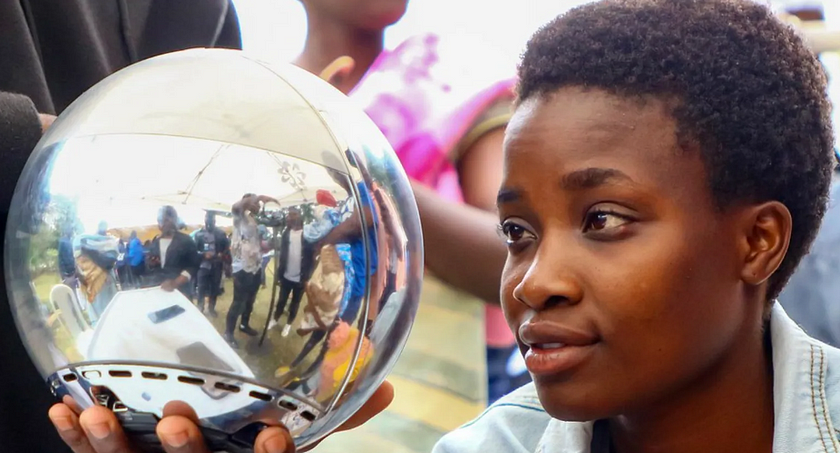“In this story, we delve into the growing trend of bio-data collection by major companies like Worldcoin, Google and others, exploring the implications for privacy, security, and the pursuit of anti-aging research.”

Intoday’s rapidly evolving technological landscape, there’s an increasing urgency among major companies to gather biological data about individuals. Much of the conversation has centered on controversial examples like Worldcoin — which scans people’s irises — but this focus often overshadows a broader issue: for years, tech giants have been collecting extensive personal information. This has included everything from fingerprints to unlock devices, facial recognition, and now, the use of iris scanning. For instance, Apple is working on an Optical ID for its Apple Vision Pro. Yet, the public seems to overlook these developments, perhaps viewing them as simply necessary for software functionality.
The fixation on iris scanning has ignited public debate, yet it begs the question: why don’t people pay as much attention to the more subtle, yet significant, advancements in biometric data collection? Often, if a topic isn’t sensationalized, it simply flies under the radar. If a headline appears controversial, people engage, but when the same information is buried deeper in the text, it’s as if no one cares.
As we delve deeper into the realm of biological information, one pressing question arises: why do these large companies want all this data? This curiosity leads to the hypothesis that they may be gearing up for something monumental — perhaps even a quest to activate an anti-aging drug. A notable case in point is the story of Telomir 1, whose CEO was murdered shortly before a major announcement. This unsettling event raises eyebrows and fuels speculation about the lengths to which companies might go in their pursuit of biological data.

“At no time should a corporation or state own any part of the global financial system.” — Jack Dorsey
To better understand aging, we must first grasp why it occurs. During cell division, DNA must be copied accurately from end to end. When sections of the telomere — the protective end caps of chromosomes — are missing, the DNA shortens as critical portions of the genetic code are lost. This degradation leads to aging and various age-related diseases. Thus, to tackle this problem effectively, researchers need two types of information: phenotypic data, which can be gathered through existing scans, and genetic data, which is much harder to obtain.
Companies like Google and 23andMe are crucial in this equation. Founded in 2006 by Anne Wojcicki and her team, 23andMe aimed to provide direct-to-consumer genetic testing for as low as $99, a dramatic decrease from the $14 million cost of sequencing a human genome at that time. The company exemplifies many traits seen in disruptive businesses: it built a strong consumer brand, successfully navigated regulatory challenges, and partnered with larger firms to expand its reach and achieve profitability.
By the time 23andMe made its inaugural Disruptor 50 list in 2013, it had raised more than $50 million from investors, including biotech firm Genentech, venture capital firm New Enterprise Associates, and Google itself. Consumers were eager to learn about their ancestry and health risks, demonstrating a willingness to pay for such information.
However, the company faced hurdles when the FDA halted 23andMe from making any health-related claims in 2013, which slowed its growth and forced it to compete with other companies focused solely on genealogy. After a lengthy review, the FDA green-lighted 23andMe’s health data in 2015, paving the way for a period of hypergrowth. During this time, 23andMe achieved “unicorn” status, announced a critical partnership with pharmaceutical company GlaxoSmithKline to use its genetic data to design new drugs, and saw a surge in popularity for personal DNA testing.

“The more data we have, the better we can understand human health and disease.” — Anne Wojcicki
As of September 2023, nearly 12 million people have had their DNA sequenced by 23andMe, with 80% opting into research that could lead to new drug discoveries. This promise became even more compelling when the company completed a merger with VG Acquisition Corp, a SPAC backed by Sir Richard Branson, although its stock has since lost more than half its value. Now, 23andMe must convince investors of its next act, especially as the novelty of sequencing one’s DNA wears off.
In this context, the transition to becoming a private entity raises eyebrows. Some speculate that 23andMe’s decision to go private coincided suspiciously with other high-profile events, suggesting a possible attempt to shift attention from deeper motives. It’s also noteworthy that Anne Wojcicki, the CEO of 23andMe, was married to Google co-founder Sergey Brin, and her sister, Susan, is the CEO of YouTube. These connections amplify concerns about the potential for data misuse and the possible alignment between 23andMe and Google in their respective pursuits of anti-aging research.
Calico, another Google venture, has focused on understanding aging and combating it since its inception, boasting a massive $1.5 billion investment. However, the company has faced criticism for its lack of transparency regarding its research initiatives. Despite its high-profile backing, little is known about Calico’s progress or plans, leading to speculation and frustration among other researchers in the field.

“They’re hyper secretive… Since they moved to Google, we can’t seem to reach them.” — Eric Topol
Some experts have suggested that the secretive nature of Calico’s operations may stem from a culture influenced by its leadership. Art Levinson, the CEO of Calico, is also the chair of the board at Apple Inc., known for its own clandestine approach to research and development. This secrecy raises further questions about what companies are doing with the data they collect and how it aligns with their long-term goals.
As we explore this rabbit hole of bio-information, we must remain vigilant and curious about the implications of these developments. The discussions surrounding biometric data collection often get overshadowed by sensational cases like Worldcoin’s iris scanning. However, a broader view reveals a complex web of motivations behind why these tech giants are amassing our biological information. The ultimate aim may not just be technological advancement but could involve ambitious projects, such as the development of anti-aging solutions. Lest we miss the bigger picture unfolding before us, it’s crucial to keep questioning the true intentions of these companies as they navigate the evolving landscape of personal data collection.

Leave a Reply